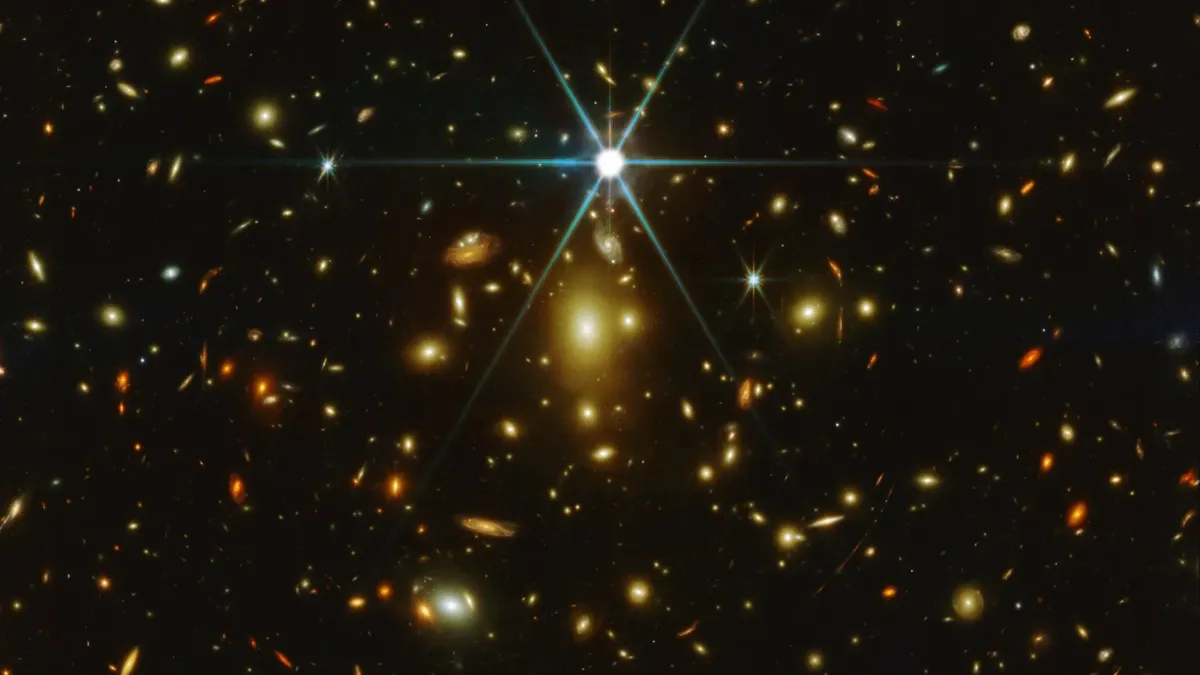
The most distant star ever discovered, nicknamed Earendel, may not be a single star as initially thought. Recent research suggests that this ancient cosmic object, which was discovered by the Hubble Space Telescope in 2022, could actually be a star cluster. A star cluster is a group of stars that are gravitationally bound and formed from the same cloud of gas and dust. This new perspective is based on findings published on July 31 in The Astrophysical Journal.
Earendel was believed to have formed just 900 million years after the Big Bang, a period when the universe was merely 7% of its current age. Utilizing the advanced capabilities of the James Webb Space Telescope (JWST), astronomers re-examined Earendel to explore the possibility that it might not be a solitary star or a binary system, but rather a compact star cluster.
According to the study led by Massimo Pascale, an astronomy doctoral student at the University of California, Berkeley, Earendel's spectral features are consistent with those of globular clusters—a specific type of star cluster commonly found in the local universe. Pascale expressed optimism about the findings, stating that if Earendel is indeed a star cluster, it aligns with expectations of how early globular clusters would have appeared in the universe's first billion years.
Earendel, located in the Sunrise Arc galaxy, is an astonishing 12.9 billion light-years away from Earth. Its discovery was made possible through a phenomenon called gravitational lensing, which is predicted by Einstein's theory of general relativity. This phenomenon occurs when massive objects, like a galaxy cluster, bend the light that passes by them, creating a magnifying effect.
A massive galaxy cluster situated between Earth and Earendel is so substantial that it distorts the fabric of space-time, allowing astronomers to observe Earendel's light, which would otherwise be too faint to detect. Studies suggest that the star appears at least 4,000 times larger due to this gravitational lensing effect, making it visible from such a great distance.
Following Earendel's discovery, researchers utilized data from the JWST's Near Infrared Imager (NIRCam) to analyze its brightness and size. They initially concluded that Earendel could be a massive star, over twice as hot as the Sun and approximately a million times more luminous. Astronomers also detected a hint of a cooler companion star in Earendel's color.
With some recent findings indicating that Earendel could be much larger than previously believed, Pascale and his team considered the star cluster hypothesis worth exploring. By employing spectroscopic data from JWST's NIRSpec instruments, they examined Earendel's age and metal content, revealing a spectroscopic continuum that echoed the expected patterns of a star cluster.
Despite the promising findings, Brian Welch, a postdoctoral researcher at the University of Maryland and a key figure in Earendel's initial discovery, cautioned that the new data is insufficient to confirm that Earendel is definitively a star cluster. The spectral resolution of the NIRSpec instrument can make the spectrum of a lensed star and a star cluster appear very similar, which complicates classification efforts.
Welch emphasized the importance of considering all available data when classifying such highly magnified objects, noting that the current study primarily focused on the star cluster hypothesis without thoroughly exploring other possibilities, such as Earendel being a single star or a multiple star system.
Both Pascale and Welch agree that tracking microlensing effects will be pivotal in unraveling Earendel's true nature. Microlensing, a subtype of gravitational lensing, occurs when a passing object temporarily distorts the image of a distant object. Changes in brightness are more noticeable with smaller distant objects, such as stars or star systems, compared to larger star clusters.
As research continues, Pascale expressed excitement for future JWST programs that may further illuminate the enigmatic nature of Earendel. The ongoing exploration of this distant star or star cluster holds the potential to enhance our understanding of the early universe and the formation of stars.